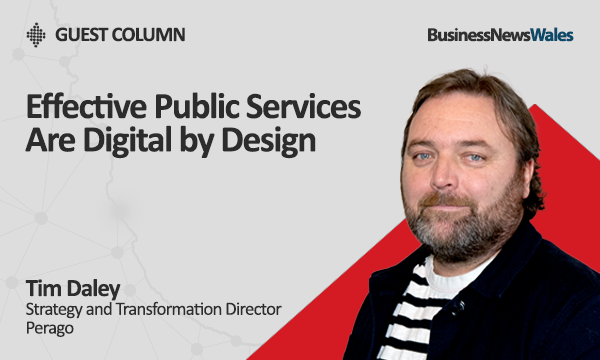
The way people interact with public services has changed dramatically in recent years. More and more of us expect to be able to do things online at a time and in a way that suits us, whether that is paying council tax, reporting a missed bin collection, or booking an appointment.
This shift has created both opportunities and pressures for public sector organisations, many of which were historically built around face-to-face, nine-to-five services.
The Covid-19 pandemic accelerated these changes. Services that many thought could never be delivered remotely suddenly were, and people became accustomed to managing transactions at any time of the day. That acceleration has had a lasting effect. From the technology we buy, to how we join up data, to how we structure services, everything has had to evolve.
But the shift is not only about technology. It is about people. When we talk about users, we are talking about everyone involved – the citizens using the services, but also the people working within organisations. Designing services that work for both groups is one of the biggest challenges we face.
Take local authorities as an example. They run services as varied as education, waste collection and council tax. Staff delivering these services have very different needs. Those working in offices have daily access to computers. Those on bin lorries do not. Yet the end-to-end service should feel seamless for the resident reporting a missed collection and for the worker out on the road recording that information. Creating that equity in service design – digital where appropriate, but supported by other methods where necessary – is central to good public service delivery.
That is why I believe in digital by design, rather than digital by default. Commercial companies such as Amazon can operate almost entirely online. Public services cannot. They have to support people who are confident using digital tools alongside those who are not, and they must do so in a way that is fair, cost-effective and sustainable. Cost pressures are already significant, and simply rolling out new technology without thinking about how it integrates with existing systems, processes and people only adds to those pressures.
A systems approach is essential. Services need to join up across face-to-face, telephone and digital channels so that citizens are not forced to repeat information or switch between disconnected processes. Achieving this requires not just investment in technology, but careful attention to how organisations pay for and manage services, and how staff are supported to deliver them.
There is another vital ingredient: openness. Too often, change programmes are hidden behind closed doors. I have found that working in the open, showing what is being built, where the risks lie, and what has been learned along the way, builds confidence and helps others avoid repeating mistakes. It is not about claiming success for one organisation, but about sharing the scars as well as the achievements.
This matters particularly in Wales, where collaboration across the public sector is often talked about but less often delivered. Sharing case studies and examples of what works is crucial.
A recent piece of work in Neath Port Talbot, where award-winning use of technology has supported social care, shows the value of sharing openly. Rather than every organisation piloting the same solution in isolation, we should be willing to trust the lessons learned elsewhere and adapt them. That way, progress can be made more quickly and consistently.
Collaboration also extends to the supply chain. Large technology providers bring credibility and scale, particularly around security and compliance, but smaller companies often bring innovation and agility. When those perspectives come together, risk can be managed more effectively and solutions can be designed that genuinely meet user needs.
Digital transformation is often discussed in terms of systems and procurement challenges, but success ultimately depends on whether people take up the services on offer. Building something technically impressive is not enough if citizens do not use it. Shifts in behaviour can take time – I think back to how long it took to move people away from queuing to tax their cars towards taxing vehicles online – but making the benefits clear, and showing openly how services work, helps build trust and adoption.
For me, that is what digital by design is about. It is not about technology for its own sake, nor about defaulting to digital at the expense of inclusivity. It is about designing services around the people who use and deliver them, ensuring equity of access, and being open about what works and what doesn’t. If we can continue to build in this way – sharing knowledge, collaborating across organisations, and focusing on the whole system – we will be better placed to deliver public services that meet the expectations of today while preparing for the challenges of tomorrow.
Tim Daley talks about this and more in the Wales Tech Week podcast episode Powering Public Services: Digital Innovation in the Public Sector. Listen to the podcast here.
Tech for People is one of the key themes for Wales Tech Week, which takes place at ICC Wales, Newport from November 24 to November 26 2025. Find out more here: https://www.walestechweek.com/


